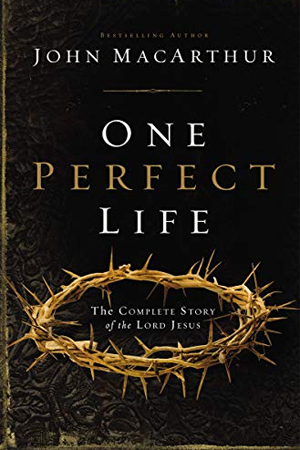This summary concerns this week’s reading between both texts ‘One Perfect Life, The Complete Story of the Lord Jesus’ (MacArthur), and ‘The Earthly Career of Jesus, the Christ, A Life in Chronological, Geographical and Social Context (Culver).’ The living ministry of Jesus up to His final week of life was to culminate in what He set out to accomplish by the will of the Father as described in the Garden of Gethsemane prior to His capture and arrest. The specifics by which Jesus explained His forthcoming work to His followers were a matter of the hardships and persecutions He would endure and finish. The point of Jesus’ ministry was to bring to the world the Kingdom of God and to satisfy the Father’s justice of sin through the atonement of believers who would call on Him and become born from above. The course of Jesus’ life was about laying the Kingdom’s groundwork while providing a path to redemption before God through the atonement of those in Him.
The final week of Jesus’ life was filled with events of harrowing and significant meaning. The sequence of activity that comprises His arrest, trials, interrogations, abuse, condemnation, torture, mockery, and crucifixion brings into vivid detail the course of His sacrifice as the Messianic King. As traumatic and bewildering the final days of Jesus were to the Apostles, the time shortly after His burial brought delight and joy of substantial measure. In fulfillment of Christ’s words before His death, He was to rise again and do so with certainty. To return to His chosen apostles and thereafter the Father by ascension, He continued about the business of building the Kingdom of God. Rendering eligible new occupants through belief, the terms of a new Covenant was underway.
The Culver and MacArthur texts track with one another as the course of events during Jesus’ final week are described in detail. MacArthur goes quite a bit farther with eschatological details around the gospel and His charge to make disciples of all nations. Culver remains within the canonical gospels during his recount of the passion week. At the same time, MacArthur continues onward through the Holy Spirit’s work and the development of the first century Church as written about through the book of Acts and the various apostolic epistles. While Culver offers multiple points of interest around his views along the passion week timeline, the reader picks up on historical details that are scripturally validated. Moreover, Culver fills in various facts and speculations to provide incidental details that stimulate the reader’s thinking. By comparison, MacArthur’s continued use of interwoven verses among the canonical gospels provides an additional perspective around what occurred with significant clarity with no room for ambiguity and without speculation.
While the Culver text serves as a commentary along with the “career” of Jesus, the reader gains considerable insight about the life of Jesus with details that borrow upon social and timeline research in an effort to comprehensively piece together what occurred. The details around who was active or a part of the unfolding events with Jesus are anchored around the “where” and “when” of what had taken place. To add substantive meaning to the events that occurred, the reader is drawn in to visualize and comprehend what transpired concerning Jesus’ sufferings and victorious outcomes. For the purpose of reclaiming humanity in fulfillment of the prophetic writings long before the entire series of gospel events, which culminated in Jesus’ resurrection and ascension, the reader is presented with hope about a kingdom that, through belief, a promise of fellowship with God and new life follows.
So as a point of distinction the Culver text ends at Christ’s ascension, and the MacArthur text continues with part XI to include various key Scripture areas of interest centered around the gospel. In addition to the work of Jesus just after His ascension, there were various truths that emerged with the help of the Holy Spirit’s arrival. While Jesus was with His followers after His resurrection, He gave instruction concerning the work of the Kingdom ahead and the forthcoming Spirit. The promise of Christ’s return and the method of Salvation of believers would become theological truths to build upon for generations to follow. Until the fulness of the Gentiles were to enter the Kingdom, the Apostles then as it is with believers today, were to make disciples, baptize them, and teach them to obey all that Jesus commanded.














